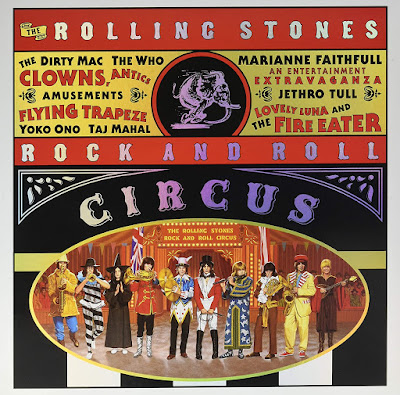I was inspired by a podcast called The 500 hosted by Los Angeles-based comedian Josh Adam Meyers. His goal, and mine, is to explore Rolling Stone's 2012 edition of The 500 Greatest Albums of All Time.
Album # 384
Album Title: A Quick One
Artist: The Who
Genre: Rock
Recorded: IBC, Regent and Pye Studios (London, England)
Released: December, 1966
My age at release: 1 - My Guest Blogger was not born yet
How familiar was I with it before this week: Somewhat
Song I am putting on my Spotify: So Sad About Us
This week I welcome guest blogger Steve Crew. Steve and I have been friends for about 25 years. However, we would later realize that our time in high school briefly overlapped and we were in the school band together. Steve is a professional musician and multi-instrumentalist. However, he is best known around the London, Ontario, music scene as a drummer for The Rizdales.
 |
| Steve Crew - behind his kit at a Rizdale's show |
 |
| The Who: A Quick One album cover (1966) |
“This isn’t their best showing, is it?” I said to my girlfriend.
A few days and several listens later, my impression changed. “Hey wait, I forgot how amazing this record is!”
Even as a Who fan, this wouldn’t be my first pick. It might not even be my second or third. It’s an important record, though. Released in 1966, A Quick One is The Who’s sophomore effort. It’s exciting, it’s pivotal for band’s future, and it’s LOUD.
 |
| The Who - (left to right) - Daltry, Entwistle, Townsend, Moon |
Happy Jack Is about an old-timer that Townsend and his friends would incessantly tease when they were young. It’s a song that showcases The Who’s signature style: Loud-Quiet-Loud. We get the power and force from the backing trio as they hit the instrumental sections. Then, just as quickly, they rein it in when the verse returns.
It’s exciting to hear something so loud and frenetic one moment, and subdued and balanced the next. To me, this is what The Who is all about. Worth noting, this song is not on the original UK release. In its place was a pretty bang up cover of Martha & the Vandals Heat Wave.
Boris the Spider. This is what you get when two bass players get drunk and come up with human names for animals. John Entwhistle and Rolling Stones’ bassist, Bill Wyman, were out for a night on the town and this song was the result.
The subject matter and John’s demonic voice in the chorus give this song its screwball quality. It’s reminiscent of something you might hear on Dr Demento. That aside, it’s a bona fide fan favourite that gets its share of play on rock radio.

Next:
Run Run Run has the classic mod-pop Who sound and it’s a great start to the album. With its jangly guitar, sweet vocals, and a catchy chorus, it’s really the sound of the times. A perfect song for ‘66.
So Sad About Us gives us a peek into the band’s future sound. For me, this is the gem on the record. It’s melodic, powerful, and it has harmonies for days. The push and pull of the rhythm section, Roger Daltry feeding those lead vocals, and that amazing chiming guitar are the straight-up goods!
Whiskey Man is John Entwistle’s second number on the record. It tells the tale of a man with an imaginary friend who loves to drink. The production (hello French horn!) and song structure give it a feel reminiscent of The Beatle's Rubber Soul record. This is my choice for best song on the first side.

Keith wrote two songs for this record and sang lead vocals on one of them. The first is the instrumental, Cobwebs and Strange. Horns, flutes, and marching drums give it a carnival feel, and every band member plays a wind instrument throughout. Check it out here.
The main reason for this number? A drum solo! Keith’s maniacal playing takes centre stage as each segment quickens to a frantic pace. The speed and accuracy of Pete Townsend’s right hand strumming is pretty amazing too. This is easily one of the most bizarre songs The Who ever recorded.
Finally, a bit about the album’s title track
At a whopping nine minutes, A Quick One is a tale of loss, infidelity, and redemption in six parts. It is Townsend’s first attempt at mini rock opera. He actually wanted cellos for the finale, but producer Kit Lambert, said they couldn’t afford them. You can actually hear the band singing “cello, cello, cello” in place of the real thing.
The song was groundbreaking for its time. It challenged the conventions of what a rock song could be, and led the way to era-defining records, Tommy and Quadrophenia, which appear on The 500 list at #96 and #267 respectively
For me, the perfect version of A Quick One is from The Rolling Stones Rock and Roll Circus, a concert organized by the Rolling Stones in 1968.
And that, my friends, is The Who, A Quick One. Enjoy!



A great read - nice summary. The title track knocks me out as well, with my preference being for the Rock And Roll Circus version as well, which I never heard until I saw the "The Kids Are Alright" film
ReplyDeleteThanks for reading, your comments have been passed on to Steve.
Delete